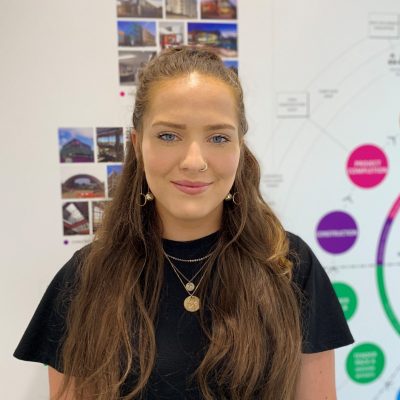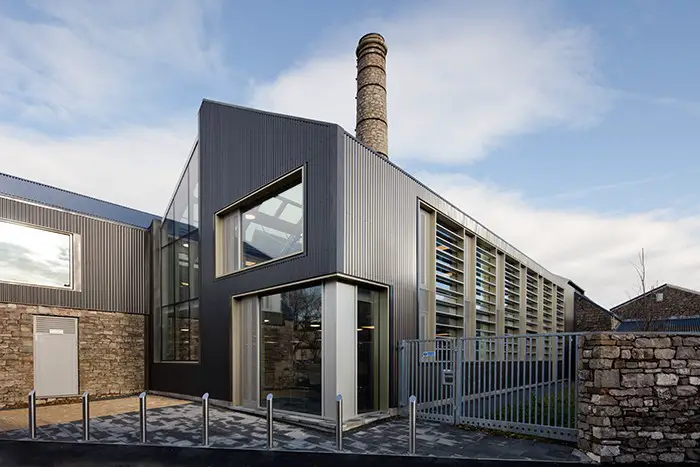Place Attachment Discussion, Design For Communities news, Architecture connection to space
Place Attachment Informs Design For Communities
post updated 24 March 2024
Original stonework features and historic ticket office were incorporated into Lake District office refurbishment:

How Place Attachment Can – And Should – Inform The Way We Design For Communities
27 July 2021
Place Attachment Informs Design For Communities after Covid
In 2021, after more than a year of confinement to our homes, it has become apparent that having a strong, positive connection to the space around us is more important than ever. A study by OnePoll for Yale even found that 58% of Brits have developed a new-found fondness for their homes and its contents. The question therefore remains, how we can use this concept in architecture to create spaces with which communities feel an authentic emotional connection. Carys Thomas-Osborne, research assistant and environmental psychologist at GT3 Architects, explores the notion of ‘place attachment’ and its pivotal role in the design of successful architectural projects.
“We know that humans form bonds and attachments to one another; our friendships and relationships provide us with comfort, stability, and support for growth. However, attachments to buildings or environments can be just as powerful. Environments, such as the house you grew up in, a favourite holiday destination, or your university campus, can be just as meaningful to us as individuals, and we may feel a sense of emotional attachment to them for any number of reasons.
Incorporating a sense of local identity at Colchester Sports Hub, Essex, England, UK:

“This is known as ‘place attachment’ and has been shown to affect factors such as happiness, perceived safety, and overall wellbeing. Place attachment has been linked to an increased sense of community, more pro-environmental behaviours, and increased efforts to maintain and protect the environment. There are almost no limits to the type of place we can form an attachment to – you don’t even have to have visited an environment for a meaningful attachment to form. Place attachments are strong and can last long after a place is lost or destroyed, even evoking a response that is similar to the grief we feel at losing a loved one.
“Place attachment can be used in architecture and urban planning to help us understand why people may object to or resent certain redevelopments. The quality or functionality of a place does not always influence the attachment people might feel towards it. My halls of residence in my first year of university was neither attractive nor functional, yet I still feel a sense of attachment to it. The same can be said for some of the environments, workplaces, or leisure facilities that we aim to improve.
Carys Thomas-Osborne of GT3 Architects:

“So, what can we do? We can learn to foster place attachment in our new projects by encouraging stakeholders and users to get involved with the process and by using materials or decorative elements that will hold significance. Studies have shown that higher levels of place attachment can even encourage individuals to actively protect the environment and engage in wider pro-environmental behaviour. Using what we know about place attachment, we can help to foster a sense of identity and ownership over our new projects.
“For example, we recently worked with a local authority to incorporate a local landmark and wildlife photography, taken or submitted by its team, into the interior concept for its new workplace. Small additions like this can make a big difference to people’s perception of a space. Attachment is not only related to the physical attributes of a space; often it is due to a particular event or behaviour that occurred there. In the context of our projects, we consider the historical uses and features of the site and integrate them into our concepts and strategies where possible.
“As with a lot of the work we do, fostering place attachment within architecture and interior design isn’t new, but being able to put a name to the concepts we’re applying can help us develop and explore the methods we’re using and the behaviours we’re trying to elicit. We want the environments we design and develop to have character and to be an important part of the community that people feel attached to; understanding place attachment can help us get there.”
A staff photography competition incorporates a sense of identity for Council Offices:

GT3 Architects
GT3 Architects is an award-winning architecture practice with studios in Nottingham and Newcastle. The people-focused firm champions an inclusive, sustainable, and engaging way of doing business that positions people at the heart of every project.
Working on projects across the UK and abroad, GT3 delivers specialist expertise in sport and leisure, placemaking and workplace design as well as education, civic, retail, and residential projects. The growing practice offers architecture, masterplanning, interiors and consultancy services, and has developed a reputation for creativity and innovation, translating bold concepts into elegant technical details and successful project delivery.
Carys
Carys is an Environmental Psychologist, with degrees from Sunderland and Surrey Universities. She works closely within GT3 Architects project teams, to ensure our People Architecture approach is incorporated at every stage of a project. With a particular focus on our workplace consultancy service, Carys helps our architects really get to know the users of our spaces before we design them. Engaging users in the design process not only helps to produce better spaces, but helps to generate buy in and enthusiasm from user groups, resulting in happier spaces overall.
Place Attachment: Design For Communities images / information received 260721
Comments / photos for the Place Attachment: Design For Communities page welcome
